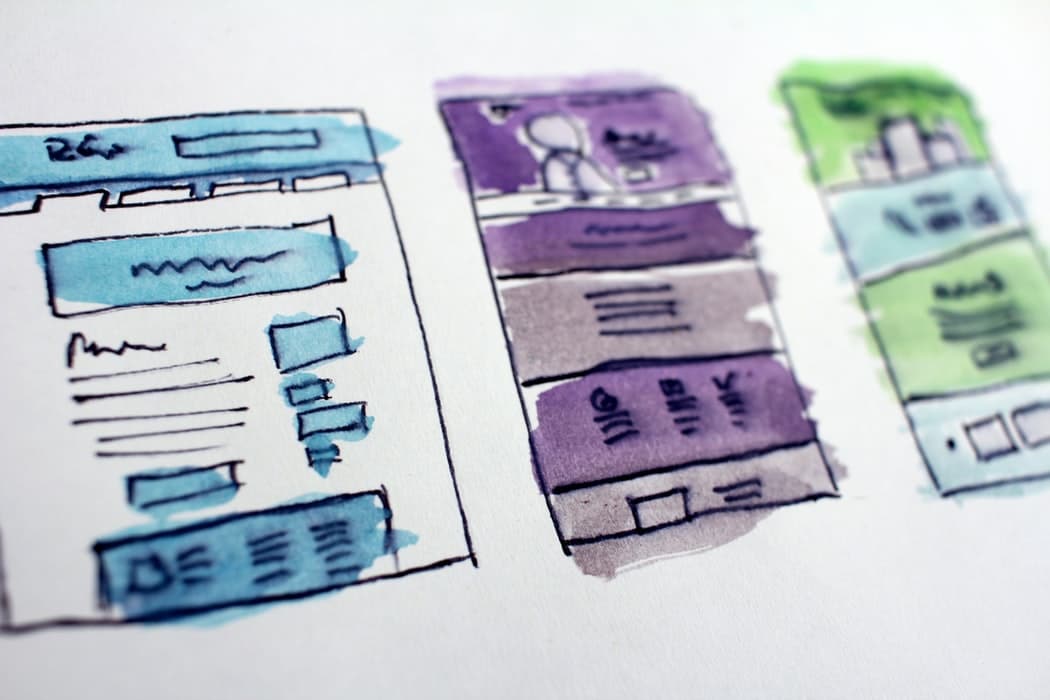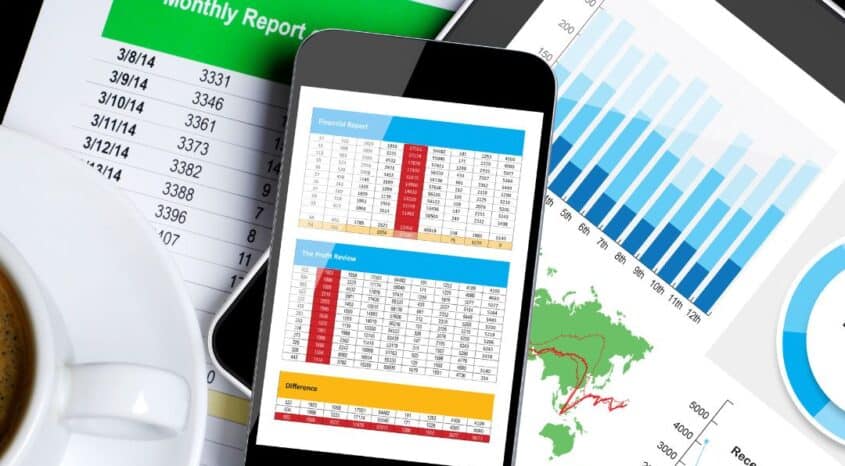When it comes to running an online business, you need to have a good email marketing strategy in place. Email marketing helps you grow and maintain your customer base. As an ecommerce business owner, email marketing can play a vital role in your success.
The ecommerce space is incredibly competitive, so businesses need to make the most out of each of their marketing channels to stay ahead of the competition. There is also no direct physical contact in ecommerce that you would get from a brick-and-mortar store–something that successful email campaigns can make up for.
Follow the tips on email marketing best practices for ecommerce businesses below. These are easy ways to boost your sales and retain more customers.
Understanding Ecommerce Email Marketing
When it comes to ecommerce marketing, we know about the importance of things like affiliate programs, SEO, or using social media. Sure, these all offer great results, but the ROI of successful email campaigns is unparalleled.
Before you just go ahead and start sending out emails to every lead you have, you need to have a clear email marketing strategy in place. This starts by understanding the different types of emails that you can send out, and how your business plans on using each of these forms of ecommerce communications to improve your brand strategy.
First, you get promotional emails. These are used to communicate any deals, specials, sales, new products, or general news about your ecommerce store. Promotional emails will probably be the main focus of your email marketing strategy. This includes your regular newsletter and any special announcements.
Then you get more specialized lifecycle emails. These emails are specifically targeted to your customers or subscribers that take a certain action. These emails are triggered by actions and are used to follow up with customers on their behavior. For example, if a customer buys a certain product from your store, you can follow up with them a few days later asking them to review the product.
Finally, you get transactional emails. These are not strictly marketing emails, and they are used in more of an administrative way. Transactional emails could include things like sending a receipt after a customer has made a purchase.
While running your ecommerce business, you will need to have a strategy for each of these types of emails. There are loads of different variations of each of these emails, each one offering new possibilities. This may seem daunting at first for new ecommerce businesses, but with a clear plan in place and access to the right tools, successful email campaigns are a piece of cake.
Optimize Your Emails to Get Them Opened
Before you even start to think about the content of your email, you need to make sure that subscribers actually open what you send them. This is the first step to a successful email marketing campaign. There are a couple of factors that determine whether your ecommerce email gets opened.
The Subject Line
You need to pay extra close attention to the subject line of your email. Every word makes an impact. This is one of the key factors that determine whether your email will get clicked on.
Your subject line needs to be intriguing, exciting, and unique. It should entice the viewer without giving away too much information or sounding spammy.
Sending the Right Content to the Right Person
Your customers and mailing list subscribers are all different, and they’re all at different places in their buying journey. You need to make sure that you target customers with relevant information so that your emails are worth clicking on. Using the right CRM solution is important here.
Reaching the Right Inbox
Emails that go straight to your subscriber’s inbox have a way higher chance of being opened than emails that go straight to promotions or spam.
Timing
Make sure that you send out your emails at the right time. This makes a major difference to whether customers actually have the time and inspiration to read your emails. Analytics reports from previous email campaigns can help to determine this.
Start With a Series of Welcome Emails
The first thing you should do when someone signs up for your ecommerce email list is to reach out and say hello. They signed up to your list for a reason, and they want to hear from your brand. So, reach out to new subscribers as soon as they sign up. When it comes to email marketing best practices, the best time to send your first mail is straight away.
You could just send a single welcome email, but it’s best to run a short series of welcome emails. A series of around three emails works well. This allows you to start developing a relationship with your new subscriber before they start receiving your regular newsletter content. You can ease into your new email relationship, introduce the brand, and let them get to know your voice.
This helps new subscribers build an interest in your ecommerce brand–something that will help with future email campaigns. Think of your welcome email as a way of introducing your brand to your customers, just like a salesperson would welcome a new customer when they enter a store.
To run a welcome email series effectively, you will need to use a marketing automation tool that sends out your messages with each mailing list signup.
Offer a Special Welcome Deal
Enticing first-time subscribers with a welcome deal is always a good idea. If someone is just signing up for your mailing list for the first time, they’re probably not yet a customer of yours.
The best strategy to convert them is to rope them in as soon as possible. The moment they’ve given you their details is best because this is when you are on their mind. This is when they’re most likely to accept your special offer and buy your product.
An effective strategy is to send out a discount coupon with their first welcome email. A simple 15% welcome discount can go a long way in turning them into recurring customers.
Keep Your Ecommerce Emails Visual
One of the most important email marketing best practices for ecommerce stores is to focus on visuals. Sure, customers want to hear about your news and what your brand has to say. The main reason they’re there though is because they like your product.
So, use your emails as a platform to show your products off. After all, your email marketing campaigns are there to turn your subscribers into customers, or to inspire existing customers to purchase again.
Long walls of text will quickly be abandoned. Make your products the start of your emails, and make sure that your brand is clearly visible in these emails.
Strong visuals make a bigger impact. Photographs are far easier to absorb than text, and they’re necessary for showing off your products to a wider audience. Also, don’t be afraid to utilize the power of video in your emails.
Segment Your Email List
People are all different, and your customers and leads are all at different stages of their journey with your brand. Your ecommerce store may attract various different types of customers, too. With more than just one target audience, you need to make sure that you send out the right content to the right people.
This is why you need to segment your mailing list. A properly organized list lets you personalize the emails you send, making sure that only relevant content ends up in your subscribers’ inboxes. A single message is often not enough for a wide-ranging audience.
Sending properly tailored content to your subscribers offers many benefits. There’s a much better chance they will open your email and engage with it. Sending the right message to the right person is a sure way to increase your clicks and decrease your chances of ending up in spam.
If you’re just sending out one message to a bulk email list, it’s time to think about segmenting your mailing list. You will see a significant difference.
How Do You Segment Your Mailing List?
First, you need to break down your audience into categories. This could include simple demographics, such as gender or age. You can take this further though by segmenting your subscribers based on their activity.
You could use factors such as the customers’ Shopify behavior, the emails that they have opened in the past, what their click habits are like, and so on. Make sure that you use an effective lead management database integrated with your email marketing software to easily manage your leads and automated messages.
Personalize Your Emails
Now that you’ve got your leads organized properly, you can start to send out more personalized emails. Personalized emails always perform better than cookie-cutter emails sent to everyone. Personalized emails speak directly to your customer, and they offer more relevant information. When it comes to email marketing best practices for ecommerce, personalization is essential.
We’ve already discussed organizing your leads, so now you can target each of your different categories with relevant emails. For a simple example, clothing retailers can target men with menswear and women with women’s clothing.
Something as simple as including the subscriber’s first name will also go a long way. Instead of “Hi there”, you can start with “Hi Tom”. A minor detail like this can make a huge impact on the way your brand is perceived. Addressing your customer by name shows that you’re friendly, and it improves the chances of the recipient reading your email.
Focus on Customer Loyalty
Any ecommerce business should focus on repeat customers. Loyal customers keep your business alive, and they can be maintained through the right email campaigns. One of the most important email marketing best practices to focus on is to keep your most loyal customers returning to your store on repeat.
There are loads of different strategies that you can use to keep your repeat customers happily coming back for more. One effective approach is to offer exclusive discounts and special offers to loyal customers. Many ecommerce email lists even refer to themselves as a type of special loyalty program.
Go back to your email marketing software, and segment your repeat customers into a list. This way, you can offer exclusive deals and offers to these VIP repeat customers to keep up their loyalty.
Split Test Your Emails
If you’re not testing your emails, then you’re missing out on your ecommerce store’s potential. Email marketing best practices call for split testing your campaigns to ensure you send out the most effective content whenever possible.
Split testing, also known as A/B testing, is when you send out two versions of the same email with slight deviations in them. The changes could be in the subject line, the call to action, or the general messaging. The aim is to compare the performance of each email and see which version works best for your business.
If a certain call to action is more effective, then you can use that same CTA messaging with your campaigns going forward. This will help lower your bounce rate and enhance the success of your ecommerce email campaigns. The more you split test, the more useful insights you will gain for more powerful email campaigns in the future.
Use Double Opt-In for Better Email Lists
Double opt-in is when a user signs up for your mailing list, and then they receive an email with a link that confirms their email subscription. Once the second link is clicked and confirmed, the subscriber will be officially added to your mailing list.
So, why is this helpful for your ecommerce email marketing?
Using a double opt-in helps to create an email list that won’t bounce back. This approach helps you to create a stronger email list with your emails being sent straight to their inbox and not spam.
Double opt-ins add an extra step to decrease your bounce rate because you are making sure that your subscribers are real people who actually want to receive your emails.
Don’t be afraid to get creative when you take a double opt-in approach. This tactic is only really successful if you actually draw in the subscribers to click on your opt-in email. So make it exciting, fun, and entice them to get signed up.
Follow This Up With a Personalized Welcome Email
We’ve already mentioned the importance of welcome emails. If you are using double opt-in, then you should follow up with a welcome email as soon as the subscriber has confirmed their position in your mailing list.
Make sure that this email is personalized and directly addresses the subscriber by name. Use this opportunity to introduce your brand, and to lay the foundation for a strong email relationship.
Send Out Abandoned Cart Emails
If a customer fills up their cart but doesn’t complete a purchase, then you should reach out to them as soon as you can. Abandoned cart emails can be an incredibly effective tactic for recovering lost sales, and inspiring customers to go back and make a purchase.
These are already interested buyers who clearly want to purchase your product, so take the opportunity to inspire them to make the purchase. Because these customers already have your products in mind, these emails tend to get more clicks and opens.
Use Effective CTAs
You need a good call to action if you want your subscribers to do something. Many email campaigns get their content right, but then they fail to actually get the receiver to do something due to weak CTAs.
Pay attention to the words you use in your CTA, and which versions are most effective. Don’t sound too pushy or salesy, and make sure that your CTA button is clear and stands out. Also, only focus on one clear action per email. Focusing on one CTA will give the customer journey more clarity.
Measure Your Email Performance
Your ecommerce email marketing campaigns can only really be improved if you actually monitor their performance. There’s little point in developing a great email marketing strategy without monitoring it. This will prevent you from being able to create retail analytics reports, measure campaign success, and find areas that need adjustment.
It’s really simple to measure your email performance, too. Some important metrics include the email’s open rate, click-through rate, bounce rate, and unsubscribe rate. Gaining some insight into these will help you fine-tune each email going forward.
Conclusion
Email marketing is one of the most important tactics for growing your ecommerce business. If you want to gain new customers, retain existing customers, and sell more products, then email is a tool that can’t be overlooked.
By following the simple steps listed above, your ecommerce business will be able to optimize each email sent, and improve each campaign’s success rate. This means more customers and more sales.
Great email marketing is easy, you just need to follow the right tactics and be equipped with the right tools. When you get it right, you’ll see just how much of an impact your campaigns can make.














